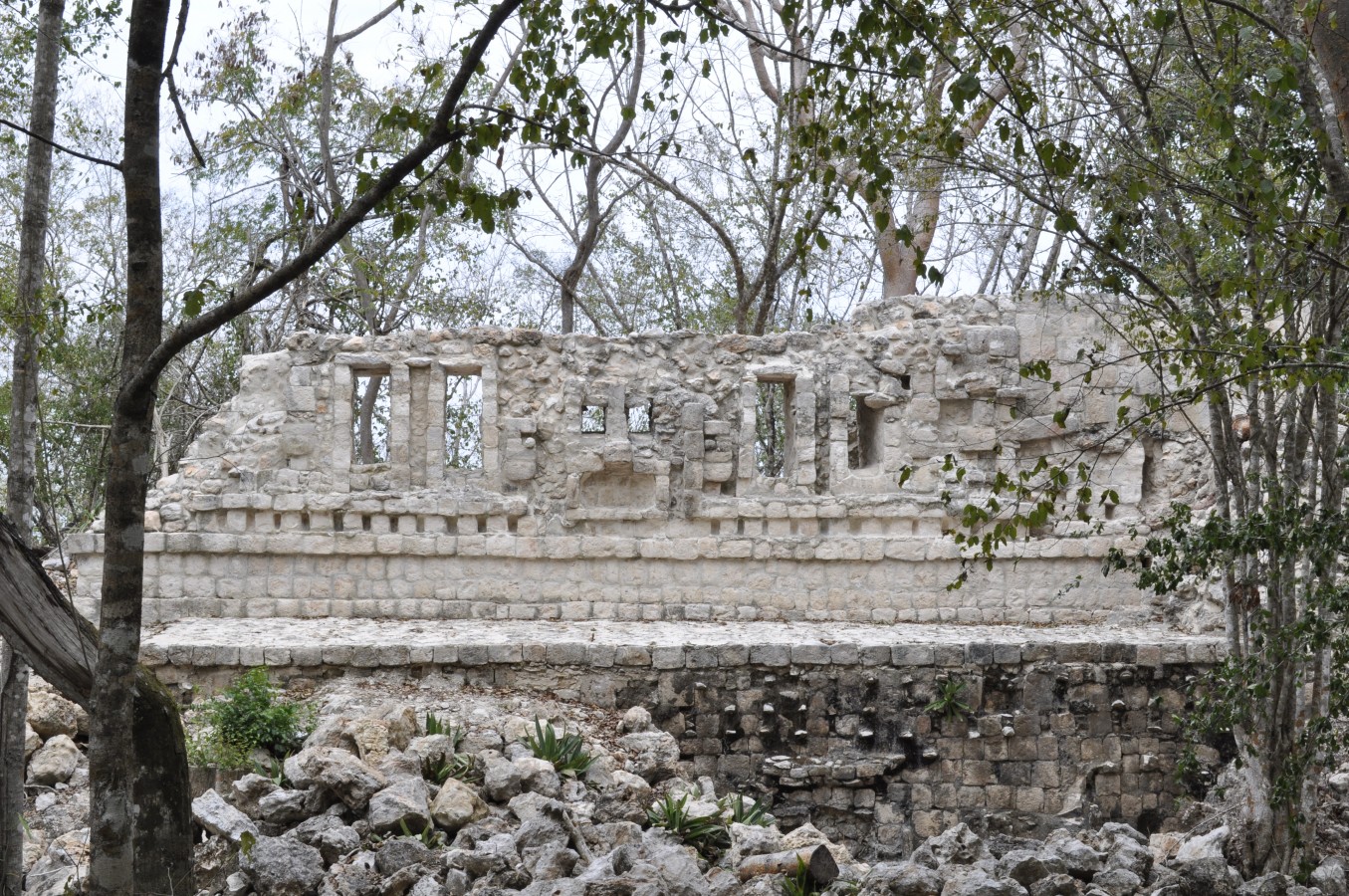The archeological site of Kanki was originally reported by Harry Pollock, a US researcher from the Carnegie Institution of Washington. He visited in the 1930s but his notes and findings were only published some 50 years later, in 1980. The site remained virtually abandoned throughout almost all of the twentieth century, with only occasional visits by hunters, looters, and explorers, as well as by some scholars of ancient Mexico such as Paul Gendrop (UNAM) and George Andrews (University of Oregon), who recorded the architectural details of some of the site’s buildings in the late 1980s.
The first intervention at Kanki took place in 1990, in an expedition led by INAH’s Campeche office, and partially funded by the municipality of Tenabo. The archeological work was supervised by Renée Zapata and the author. A decade later, in 2001, Florentino García (2001) reported an archaeo-astronomical phenomenon in the Building of the Roof Comb (“Crestería”) and, in 2007, the INAH’s department of archeological records demarcated a protection area for the site’s largest buildings, covering an average area of 21 acres. It is worth mentioning that more pre-Hispanic remains lie outside this area, in the surrounding plains and hills.
In 2009, an INAH program to maintain archeological sites open to the public made it possible to restore the openwork roof comb of Building 1 and various sectors of the building with the “inverted staircase” ceiling—named after the type of Maya arches used for the vault, a type of construction that combines elements of both Petén and Proto-Puuc architectural styles.
As part of the maintenance works in 2013, interventions have also been made in the House of the Twenty Chambers, the Building of the Inverted Steps, the south building of the Southeast Quadrangle and the House of the East, although work was only carried out in small areas of each of these buildings that had suffered damaged due to heavy rainfall the previous year. In 2015, one of the residential platforms at the site entrance was restored, and work began on removing amorphous stones that partially covered the frieze on the Building of the Roof Comb.
The concentration of monumental architecture and the presence of sculptures and hieroglyphic inscriptions strengthens Kanki’s position as an important settlement in the region, given that not all sites enjoyed enough political power to support specialist stone carvers and those versed in the sacred art of writing. Xcalumkin and Cayal, lying an average of 14 miles to the north and south of Kanki, respectively, are sites dating from the same period as Kanki.







